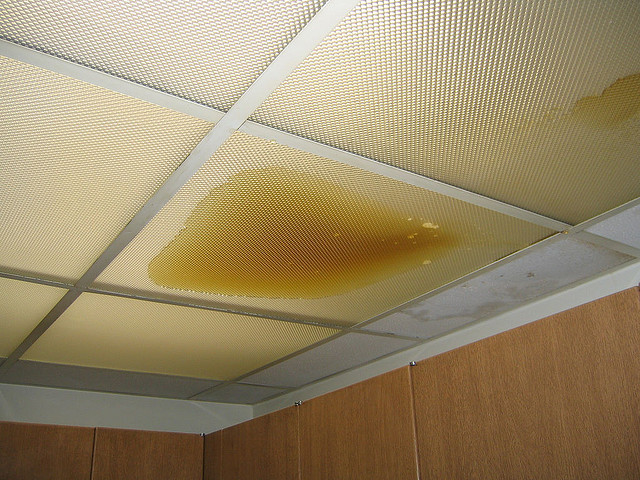How do you really feel in relation to Leaking water lines?

Early detection of leaking water lines can alleviate a possible disaster. Some small water leaks might not be visible.
1. Take A Look At the Water Meter
Every residence has a water meter. Checking it is a guaranteed way that assists you uncover leakages. For beginners, turn off all the water sources. Guarantee nobody will certainly flush, utilize the tap, shower, run the cleaning maker or dish washer. From there, most likely to the meter and also watch if it will change. Because nobody is utilizing it, there need to be no activities. If it relocates, that suggests a fast-moving leakage. If you identify no changes, wait a hr or 2 as well as inspect back once again. This implies you may have a slow leakage that might even be underground.
2. Inspect Water Usage
Assess your water costs as well as track your water consumption. As the one paying it, you should see if there are any type of inconsistencies. If you find sudden changes, despite your usage being the same, it means that you have leakages in your plumbing system. Keep in mind, your water expense ought to drop under the exact same range on a monthly basis. A sudden spike in your expense suggests a fast-moving leak.
A consistent boost every month, also with the exact same habits, reveals you have a slow leak that's additionally slowly intensifying. Call a plumber to thoroughly inspect your home, specifically if you feel a warm location on your flooring with piping underneath.
3. Do a Food Coloring Examination
When it comes to water intake, 30% comes from commodes. If the color somehow infiltrates your bowl during that time without flushing, there's a leak between the tank and bowl.
4. Asses Exterior Lines
Don't forget to examine your outside water lines as well. Should water seep out of the link, you have a loose rubber gasket. One small leak can squander loads of water and increase your water expense.
5. Evaluate the situation and also examine
Property owners need to make it a behavior to inspect under the sink counters and also inside cabinets for any kind of bad odor or mold and mildew growth. These 2 red flags show a leak so punctual interest is required. Doing routine inspections, also bi-annually, can save you from a significant problem.
Inspect for stainings and also weakening as most devices and pipes have a life span. If you presume dripping water lines in your plumbing system, do not wait for it to rise.
Early detection of leaking water lines can reduce a prospective catastrophe. Some tiny water leakages may not be visible. Examining it is a surefire means that assists you uncover leaks. One tiny leak can waste lots of water as well as increase your water expense.
If you presume leaking water lines in your plumbing system, do not wait for it to escalate.
How to Know If Your Home Has a Hidden Leak
Water Meter Reveals Inexplicable Water Usage
If you’d like to test whether or not there’s a leak somewhere in your home, you can do this using your water meter. Here is how to conduct the test:
Don’t use any water in your home for at least 30 minutes; this also means not turning on faucets or water-using appliances.
Go outside, and check your water meter for activity.
If your water meter shows that there was activity, even though no one was using any water, this proves that there is a leak in your home.
Visible Mold or Mildew Growth
Leaks behind walls create moist, dark environments that allow mold and mildew to grow and thrive. Eventually, you might see mold growth forming on the wall closest to a hidden leak.
If mold is growing in an area that receives a high amount of moisture, such as a bathroom, it may simply be an indication that better ventilation is needed. However, if you see mold growth on a wall or the ceiling in an area where you would not expect, you probably have a hidden leak.
Musty, Mildew Odor
Sometimes you might not be able to see the mold or mildew that is growing as a result of a leak. However, the smell can give the problem away just as easily. If you catch a whiff of something musty, there’s a good chance that old water is collecting somewhere in your home that you can’t see.
Stained/Warped Walls, Ceilings, or Floors
When your home soaks up water, a variety of red flags can become visible, including ceiling stains, bubbling drywall, warped walls, and sagging floors. While these issues can be caused by excess humidity, they can also be signs that a pipe or plumbing connection has started leaking behind your walls.
Inexplicably High Water Bill
After a while, you get a general sense for what your water bill should be. If you own a pool or sprinkler system, your bill will tend to be higher during summer. However, if you receive a water bill that seems especially high, and you can’t figure out what caused it, then you may have a hidden leak somewhere that’s increasing your bill.
https://www.plumbingjoint.com/blog/2019/july/how-to-know-if-your-home-has-a-hidden-leak/

As a serious reader about Top leak detection hacks, I think sharing that section was a good thing. If you please take the time to distribute this blog if you liked it. I love reading our article about Top leak detection hacks.
Comments on “How to Locate and also Fixing Water Leaks-- A Comprehensive Overview”